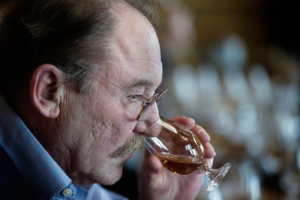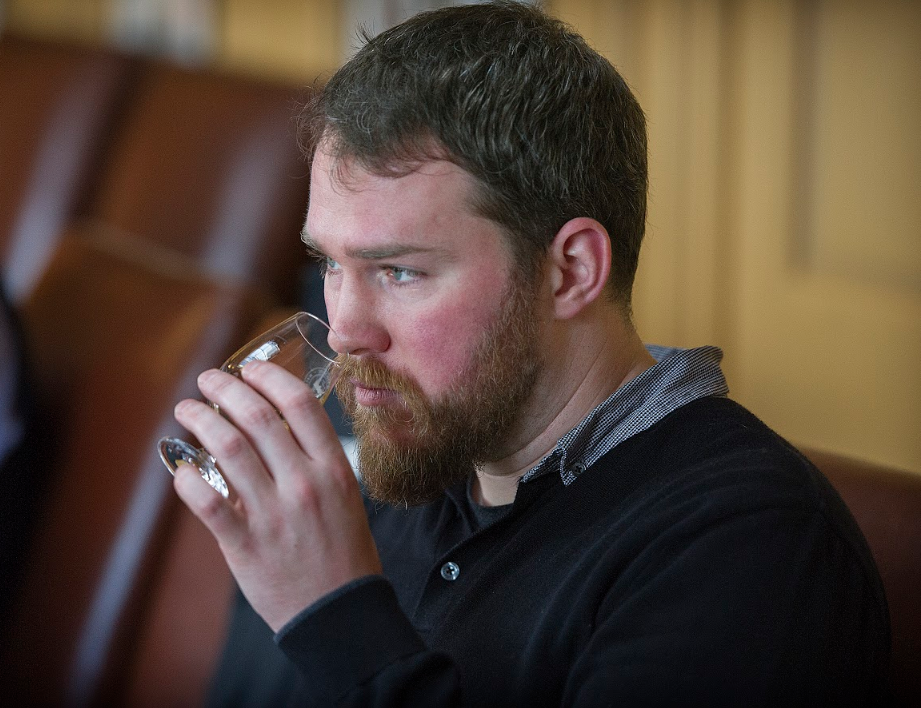When are we best able to appreciate the complexities of a Society single cask, single malt? Scotch Malt Whisky Society Tasting Panel chair Angus MacRaild says it depends on whether you’re drinking for analysis, or pure pleasure.
If you were asked to run a marathon, climb a hill, or even do something more mundane such as the washing up – or read an article like this one – the time of day would obviously determine your willingness and ability to engage in these tasks. Our mental and physical prowess and stamina alters throughout the natural rhythms and cycles of our daily routine. We are naturally better and more attuned to some things at different times of the day.
The same is true of our olfactory faculties and our ability to accurately perceive and describe aroma and flavour. But is there a set profile for how sensory ability evolves throughout the day?
The preferences of various whisky professionals align rather strongly with the assumption that our sensory abilities are at their most sensitive from the morning up until midday. Speak to reviewers, blenders, writers, distillers and buyers; most will tell you that they prefer to assess professionally between these hours.

Charlie MacLean, Chair of the SMWS Tasting Panel
HEIGHTENED SENSITIVITIES
The whisky writer Charlie MacLean’s own approach sums up this broader practice neatly: “Before lunch, ideally starting around 10am, on an empty stomach – although I do allow myself a few cups of coffee for breakfast. Some ‘noses’ avoid this, but all agree the morning is the best time. In the early afternoon one’s senses dull down, even if you have not eaten lunch.”
The phenomenon of diminishing olfactory sensitivity over the course of a day is not only anecdotal but has also been documented in scientific studies. In 2017, the academic journal Chemical Senses examined the influence of circadian timing on olfactory sensitivity and confirmed the established theory of heightened AM sensitivities.
A similar approach is taken by Dawn Davies, Master of Wine and buyer for Speciality Drinks. “For me my palate is best in the AM before drinking coffee or having much food,” she says. “I believe it’s because this is when your palate has had less ‘work’ to do, with eating and drinking, so it’s more receptive to flavour. Like any muscle, the more you use it the more tired it becomes.”
Dawn also tastes in the afternoon but will revisit any product she is unsure about in the AM. In terms of the difference between wines and spirits, she doesn’t see a reason to alter her approach.
“The only thing with tasting spirits is the alcohol content, so your palate will get tired more quickly,” she says. “But I don’t think this will be affected by timing. When your palate is tired, it’s tired.”

Angus Macraild, Chair of the SMWS Tasting Panel
THE RIGHT ENVIRONMENT
The notion of food and drink is commonly mentioned, and an obvious one. However, more easily overlooked might be aspects of fatigue and general frame of mind. Mental health, how good a night’s sleep you’ve had, stress – all these factors can influence the process of assessment.
As Charlie MacLean puts it: “Samples can lie unopened on my table for days if I’m not ‘in the mood’, or swamped by other obligations such as writing or taking care of admin,” he says. “You have to be able to put all other distractions out of mind when tasting. Focus and concentration are key.”
The picture that emerges is that the efficiency and quality of the sensory process is heightened by routine, consistency and creating the right environment in which to assess, as well as doing it at the right time of day. There’s a reason blending labs are clinical, neutral spaces – not only free of the distractions of external odours, but neutral in light and colour, quiet and free of distraction. A place where the mind as well as the olfactory system can focus.
Aroma and taste are powerful catalysts for the activation of memory. We might be sensitive to the detail of a spirit, but if we do not possess the necessary vocabulary to articulate the triggers in our memory then the most essential aspect of the assessment, that of communication, is lost. An ideal tasting time, and environment, channels and focuses that process with as much accuracy but also as little interruption as possible. If we are stressed, unhappy or distracted, it not only interferes with our basic sensory perceptiveness, but also our connection to memory and the subsequent thought process and articulation.
FIGHTING FATIGUE
When we do Tasting Panel sessions these days we have refined the process with these aspects in mind. Panels meet no later than 2pm and no more than a dozen samples are assessed. By creating a stricter and more uniform process, the sensory evaluation becomes more consistent and accurate.
The issue we face more commonly than sensory fatigue is linguistic fatigue. It’s no secret that the SMWS has made something of an art form out of exuberant, tongue-in-cheek Tasting Notes.
During the sessions, when confronted with a multitude of samples of similar age from fresh bourbon barrels, continuously coming up with diverse descriptors can pose a challenge, whatever time of day it is.
However, much of the sculpting of the actual notes happens later – often with further assessment at home from the same sample.
OUT OF THE LAB, INTO REALITY
Another key aspect of how spirits are assessed professionally, and one rarely discussed, is the degree to which it differs from how you as a member of the SMWS will often enjoy the product at home – especially malt whiskies. These expensive drinks are commonly consumed with a degree of reverence before or after food in the evening and late into the night. An experience far from the neutrality of the lab, the writer’s desk or the buyer’s office.

Dawn Davies, Master of Wine, Speciality Drinks
As Dawn Davies points out: “I think there are probably a lot of things wrong with how we analyse because you have to be objective and think ‘who is my customer?’, which is hard as personal preference always comes into it.
“But at the end of the day we have to assess in some way and looking at something in the clinical light of day takes some of the emotion out of it.”
The nature of our olfactory sensitivities means that the professionals assess at broadly similar times of day in similar environments. But does this mean that those who create or select products experience them in fundamentally different ways from those who consume them?
Given that the professional taster is attempting to deconstruct a spirit to its foundations, the answer is usually yes. However, given that the slight dulling of sensitivity brought on naturally by the evening often goes hand in hand with relaxation, this situation lends itself rather obviously to the simple pleasure of actually enjoying a dram, without thinking too deeply about it.
If there’s a lesson that emerges from any of this, it’s to analyse in the morning and save the dramming for later.








